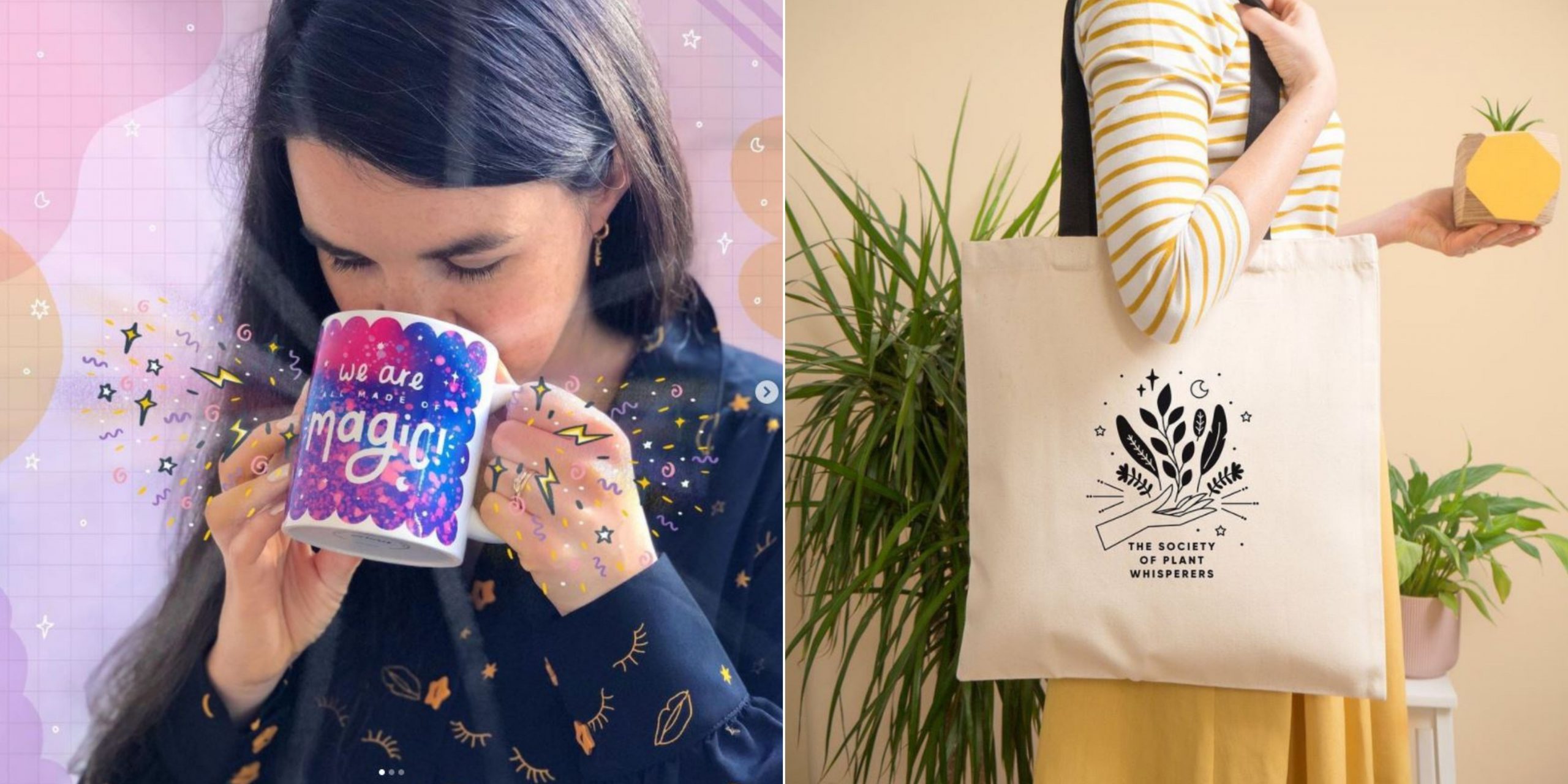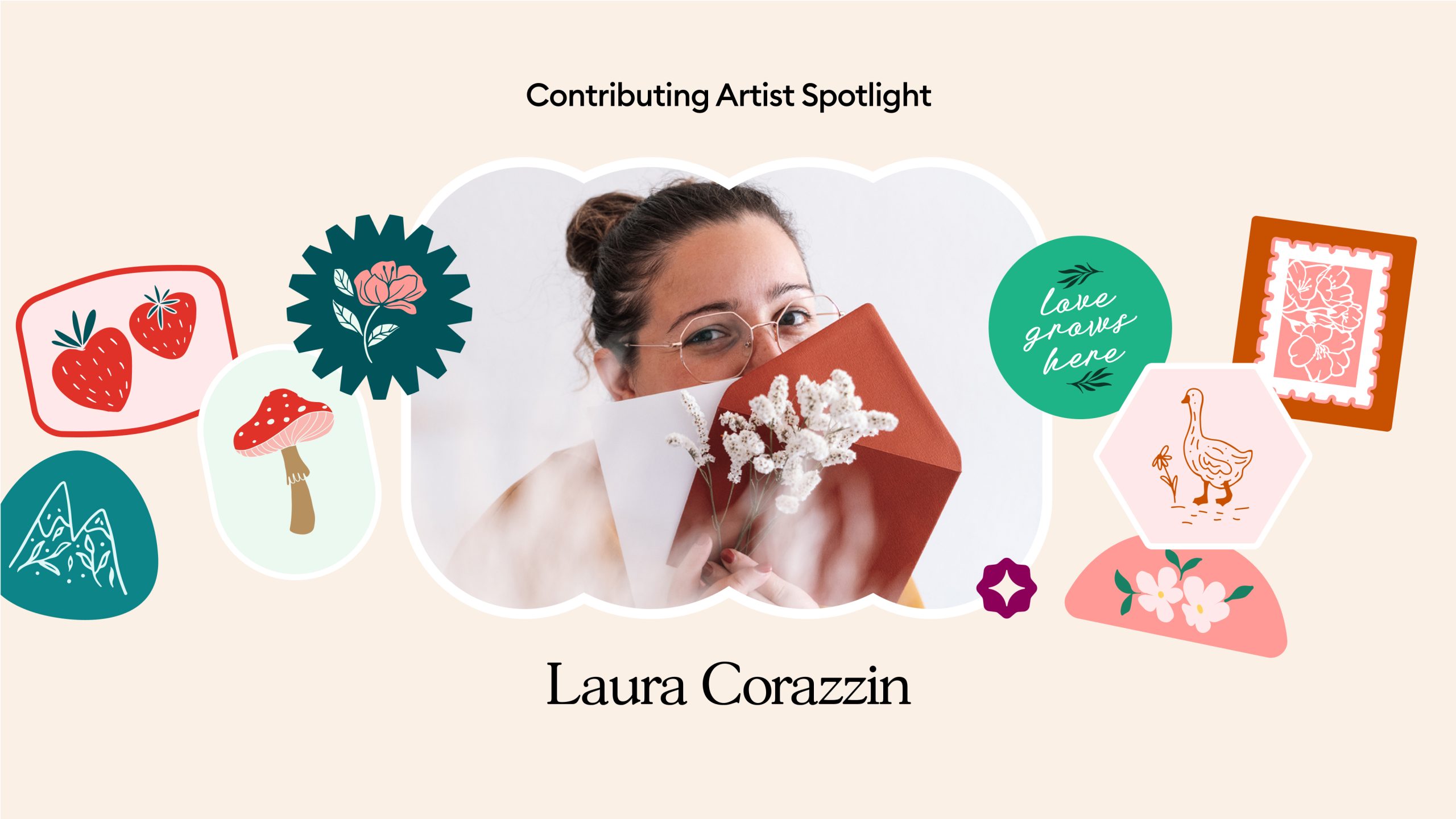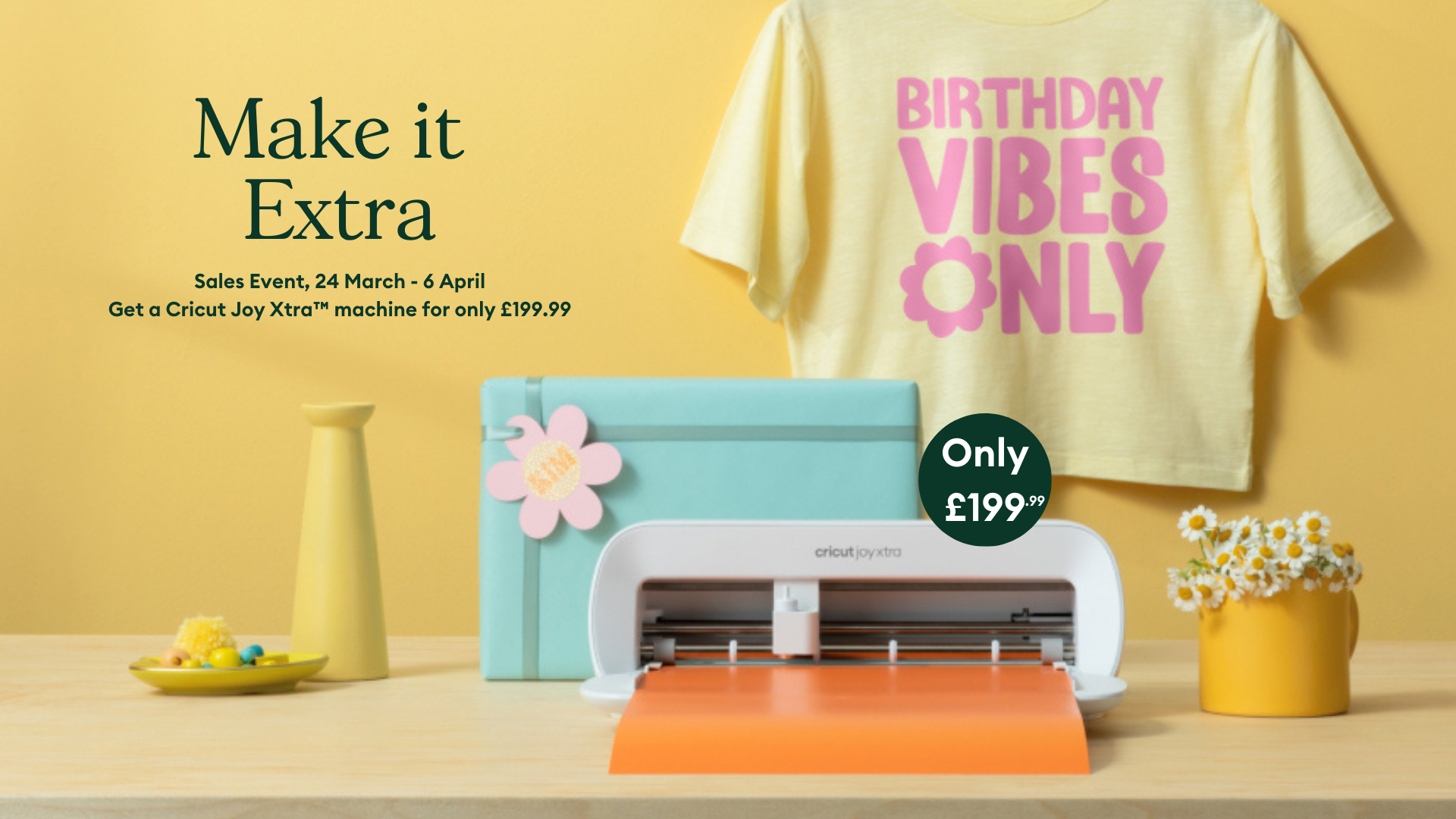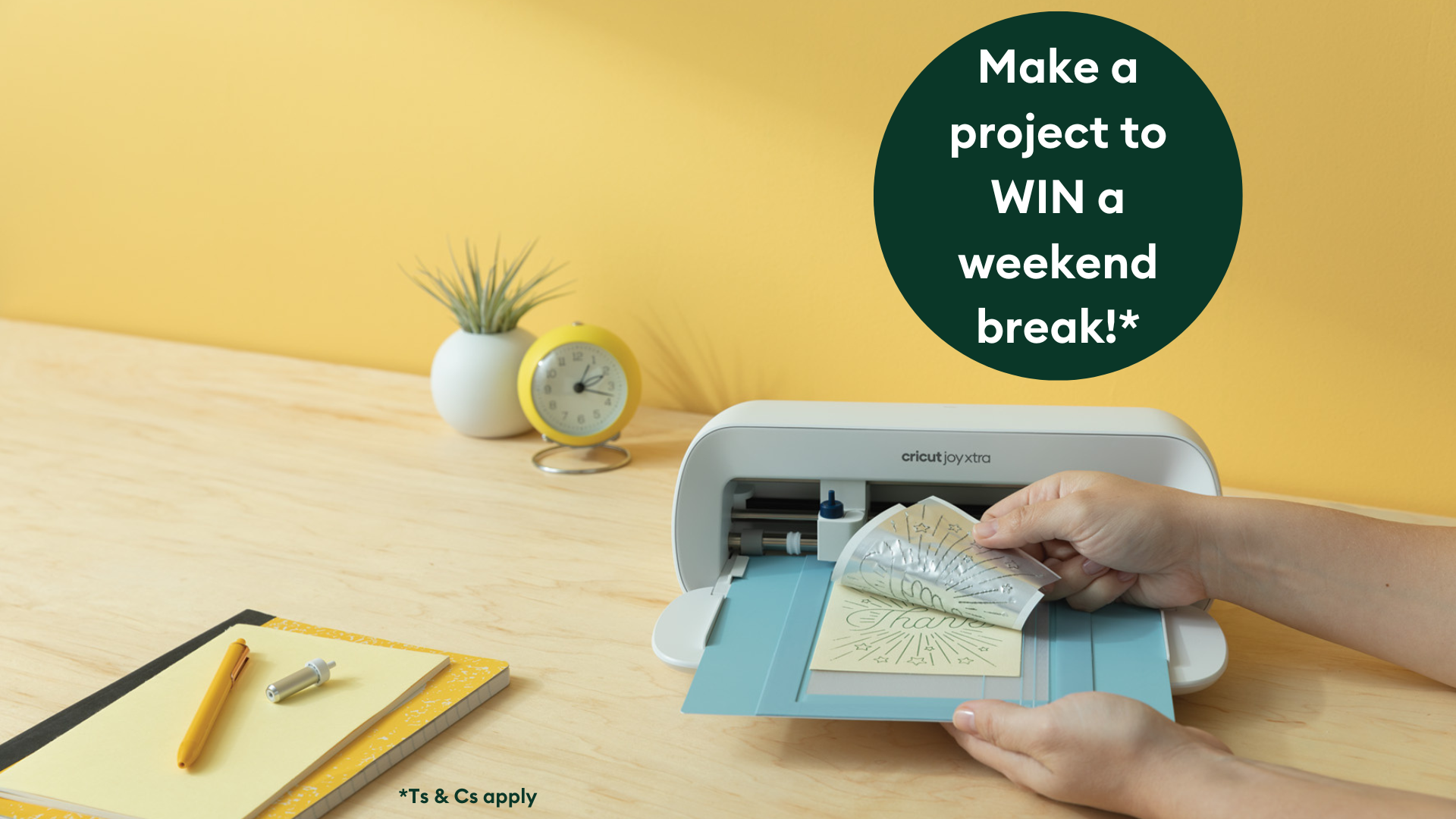
Small Business Checklist with Joanne Hawker
In celebration of the brilliant and creative minds that utilise Cricut machines to make and sell their own products, we are sharing some top tips from small businesses.
Starting Out With A Small Business
Have you ever considered starting a small business but couldn’t figure out where to start? Questioning how you source materials and whether or not your product is unique enough?
Joanne Hawker, from joannehawker.com, has very kindly provided us with a checklist of her key tips for starting a business. Ranging from identity to finances, Joanne covers all the important things to take into consideration when starting up your own small business.

1 – Register with HMRC if you plan on selling your makes
This really isn’t as scary as it sounds but is a really important step if you are going to be selling your creations! This means that you’ll also register for self-assessment and will be responsible for accurate recording of your income and expenses. It will also mean that you have to complete a tax return before the end of January every year!
It’s easy to apply and if you ever need to speak to anyone, HMRC are incredibly helpful on the phone. Many people apply to be a sole-trader but there are other options too if you’re working in partnership or would prefer to be a limited company.
You can find out more about becoming a sole trader here and there are explanations of the other options here.
2 – Have a fresh, new idea
Despite what people say, imitation is not the highest form of flattery. In fact, it can be pretty disheartening to see your work replicated on other people’s products. Having a fresh idea is important, not only because it’s what makes you YOU, but it also gives people a reason to shop with you. If they can’t find your product or design anywhere else!
It becomes part of your identity, brand and unique selling point. One thing that I would personally stay clear of is trademarked and copyrighted content. Just because there are people out there selling Disney, Marvel and other trademarked goods, it doesn’t mean that you should too. In fact, if you are caught you could end up with much more than a slap on the wrists and find yourself wrapped up in a legal case! It’s known that big brands do trawl online market places issuing take down notices, so it’s just not worth the headache or stress!
If you are struggling with the image side of things, you can purchase stock images from Etsy, source royalty free clip art online or even take advantage of Cricut Design Space!

3 – Speaking of identity…
You’ll need a business name and identity! The name can be anything you want! It could be your own name, or something a little different and can relate to what you want to sell.
It might not even relate at all, but you have a little story or reasoning behind why you chose it. When it comes to the name, you can let your imagination run wild! But remember to check that it’s not already taken!
Don’t forget the logo!
Once you’ve decided your name, you’ll need to start thinking of the ‘identity’. This is usually in the form of a logo and other elements that you will associate with your brand. This could be colours, fonts and symbols etc. If the idea of creating your own logo doesn’t sound like something you’ll be able to do, seek out a graphic designer who can help you!
Alternatively, if you don’t think you’re ready for that level of commitment yet, you can pick up pre-made logos on Etsy or Creative Market. You can simply change the wording! The only downside is that you may on occasion run into someone using the same design as you. Cnce you start to grow and figure out the direction you want to head in, you can easily change it to something that suits your brand a little better.
4 – Practice, practice, practice!
Once you’ve chosen your craft, keep practicing it over and over again. No one is perfect at something on their first attempt and there is always something that we can improve on! With enough practice, you can ensure that you are sending out products that you are truly happy with and would be happy to receive as a customer! It also means that the customer is receiving a quality product!
5 – Get social!
Once you’re ready to share your brand and creative makes with the world, ensure you get your new business name on social channels such as Facebook, Instagram and TikTok. Social media is a great place to build an audience of people who are interested in what you do. These people could then go on to be your potential customers!
However, social media can be used for more than just trying to sell your products. It’s a way for your potential customers to feel connected to who you are as a brand and as a person. It’s an easy way to make connections, and talk to people on a human level. Give people a little insight into what you’re about, because the more they feel like they know you and can talk to you as a friend, the more likely they are to purchase.

6 – Make sure you have buckets of enthusiasm and drive
Starting a new business can be a lot harder than it looks, so you’ll need plenty of enthusiasm and drive to make it work. Sales won’t pour in overnight and it could take years of hard work, graft and learning to make it work. However, with enough drive and enthusiasm to succeed, you’re on to a winner!
7 – Be open to learning
There will be times when you get stuck, or something just doesn’t go right at all. So make sure that you’re open to learning new methods and are not afraid to ask for help!
Once you’re really deep into something, it can be difficult to see what isn’t working for you. This is where some outside help can really make a difference. A good example of this is when I first opened my Etsy shop. I did everything that I thought I was supposed to do but in reality, it wasn’t ‘quite’ there yet. My SEO was a bit all over the place. My tags and titles didn’t work as well as they could have done and I hadn’t made the most of my bio. It took an outside person to point this out to me and to help me make the changes I needed to make my shop successful.
I’m sure you will find something that you get stuck on throughout your small business journey. There are so many places that offer a wealth of advice! A few of these being…
Cricut UK Blog – for seasonal trends, advice, new software features, project ideas and more.
The Design Trust – everything from starting a business to growing, marketing and getting organised.
The Etsy Sellers Handbook – everything you need to know about Etsy written by Etsy!
The Indie Retail Academy – helpful articles on running your small business and how to approach wholesale.
YouTube – this may seem a bit obvious but there are SO many tutorials on absolutely everything on YouTube! I learned so much about online selling platforms. The best bit about it is that you can keep pausing it to follow along in real time!
Skillshare – this is more of a paid-for service but it includes mini courses written by expert creatives! There’s everything from painting and drawing, to more technical things like creating your first newsletter or mastering a new skill you’ve been stuck on!
Holly & Co – Holly was the original founder of Not On The High Street and now runs Holly & Co. Over on her advice hub you can find lots of super-valuable information. Anything from finance & legal, to selling your products and branding, etc.
8 – Join Facebook groups
As much as some of us complain about Facebook, it really does have some great content if you know where to find it. There are groups for almost every craft and they can be a great way to connect with people. You can ask questions to those who have been doing this a lot longer than you have!
These groups are a great place to ask for advice, pick up hints and tips, look for product recommendations and source materials that you’ve been having trouble finding! From a community point of view, you can connect with people who understand what you’re going through. They’ve been there too and are usually more than happy to share their experiences! There are several Cricut Product Expert Facebook groups to help you with your Cricut questions.
9 – Research!
Before you think about sliding into the Instagram DMs of someone to ask where they source a certain part of their business from, make sure you’ve done your own research first! 9 times out of 10, you’ll be able to find the answer yourself with a good rummage around on Google!
Most small businesses spend hours researching and experimenting with different resources and materials before committing to them and using them for their makes. This often means that they’re reluctant to openly share it. There will be those that will happily share. Please don’t be offended if you don’t get a reply to your message. What works for one business might not work for another.
Some suppliers will allow you to purchase samples of materials to test for yourself so that’s a good place to start if you’re unsure about making the investment.
Of course, Google is a great place to start, but did you know that you can also search Facebook groups? If you want to ask where to source ‘X’ from, or how to do ‘X’ technique, then there’s a good chance someone else has already asked it before!
10 – Open a separate bank account
This was the best piece of advice my accountant gave me. It made keeping track of business income and expenses so much easier when it came to sorting out my tax return!
It also means that you know how much you have to spend on your business and how much you can pay yourself without having to figure out what portion of your bank balance is personal income and expenses from elsewhere.
There are many banks that charge a monthly fee for opening certain accounts. But there are a few out there that also do them for free! Fees are changing all the time and there are always new offers for opening your first business account. It’s worth having a look to see what’s out there!
11 – Start a mailing list
Once you’ve got into the swing of things and you’ve found your feet with social media and marketing, consider starting a mailing list. Whilst social media is an amazing place to hang out and meet people, it’s not something that we can ever ‘own’.
If something were to happen to your favourite social platform or you find yourself hacked or locked out, how would you contact your followers? Mailing lists are really easy to start and don’t need to be complicated at all! Mailchimp is a great place to start. They make all of the GDPR requirements really simple with their opt-in forms and easy unsubscribes!
There is also a free plan which means that you can start building your mailing list at no cost to you!
12 – Know your worth and add tax!
This is also a really important one! It is so important to ensure that you are pricing your products properly and are not underselling yourself or devaluing the work of those also in your niche. These are just a few things to consider when pricing your work:
- Cost of materials (include it all, even printer ink!)
- Cost of packing materials
- Postage
- Your time (you don’t want to spend hours and hours on something and then sell it for next to nothing!)
- How much do you want to make?
- How much are other people selling similar items for? (note – this isn’t to copy them, this is to see where your pricing sits compared to those creating similar items)
- Cost of fees, such as card and processing fees or market place fees such as commission
- Any applicable taxes
- If you’re using something like a heat press, also consider other bills like electricity

13 – Protect yourself!
Strong passwords and two-factor authentication (where possible) are an absolute must! Losing access to your social media and online shops can not only be an absolute nightmare but also devastating if you lose everything and have to start all over again!
For instance, I get hundreds of password reset requests sent to my email every year from people trying to hack my Instagram. But since enabling the two-factor authentication, no one can get in without having my phone (touch wood!).
So, if a platform offers you extra security measures be sure to take advantage of them!
Small Business Checklist with Joanne Hawker
We would like to say a massive thank you to Joanne for sharing her very helpful advice and her invaluable information! Follow more of her experience of being a small business owner on her Instagram profile. And don’t forget to check out her website here.
Want to find more small business tips? See more here.











